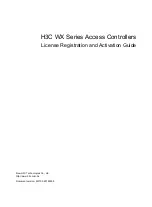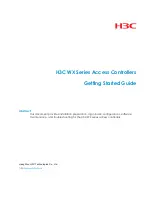
mounting
WMGD Pty Limited trading as Dynalite ABN 33 097 246 92
Unit 6, 691 Gardeners Road Mascot NSW 2020 Australia
t +61 8338 9899
f +61 2 8338 9333
dynalite.info@philips.com
Philips.com/dynalite
Select A Suitable Location
This device is designed for indoor use only. If
installing in an external location, the
DBC1210 must be housed in a suitable well-
ventilated enclosure. Choose a dry location,
that will be accessible after the installation is
complete. The DBC1210 should be mounted
vertically, the right way up.
An air gap of
100mm on each side and at the top and
bottom of the device should be adhered to.
This air gap is required to ensure the
serviceability of the DBC1210 without its
complete removal from the mounting surface.
This device may emit some mechanical
noise. Take this into account when deciding
the mounting location.
Fixing the Device
The DBC1210 has integral mounting brackets
attached to the inside of the enclosure. The
brackets are designed to accommodate 4
fixing screws up to 8mm diameter. The
DBC1210 can be fixed to the wall without
opening the cabinet or removing covers.
Make sure no dust or other debris enters the
device during installation. Do not leave the
front cover off for any length of time.
Excessive dust and dirt can degrade the
cooling of the internal components.
Allow for Cable Entry
Supply and load cables enter the
enclosure at the top. If these cables are
fed from below the mounting position,
they should be routed around the
enclosure to enter at the top, or
alternative knockouts are provided on the
right side below the lid line. An
alternative method is to stand the
enclosure off from the mounting surface
by mounting it on a cable tray or a
Unistrut style product. The cables can
then be routed between the enclosure
and the mounting surface, and enter the
enclosure via the cutout provided on the
mounting face. The control cables enter
at the bottom of the enclosure. Control
cables should never be run in the mains
voltage
sections
of
the
enclosure


























